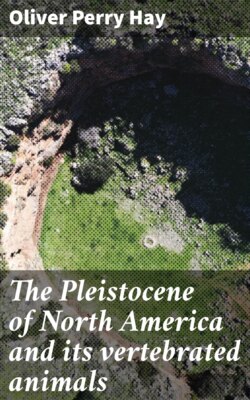Читать книгу The Pleistocene of North America and its vertebrated animals - Oliver Perry Hay - Страница 57
MASSACHUSETTS.
Оглавление(Maps 5, 6.)
1. Coleraine, Franklin County.—In 1872 (Amer. Jour. Sci., vol. III, p. 146), Dr. Edward Hitchcock, in a letter to one of the editors, reported the discovery of a tooth of a mastodon at or near this place. It had been shoveled out of a muck-bed, on the farm of Elias Bardwell. Nothing more is known about the matter. This tooth was mentioned by B. K. Emerson in 1917 (Bull. U. S. Geol. Surv. 597, p. 149).
2. Shrewsbury, Worcester County.—In 1885 (Trans. N. Y. Acad. Sci., vol. V, pp. 14, 15), N. L. Britton read before the Academy an extract from the New York Times, copied from the Worcester Spy of October 14, 1885, relating to the finding of a human skull near Shrewsbury, close to the spot where mastodon remains had been found the year before. In Science (vol. VI, 1885), Professor F. W. Putnam gave an account of the investigations of the case made by himself and others. The conditions under which the mastodon was buried were incidentally described. In the same year Franklin P. Rice, a member of the Worcester Natural History Society, published a pamphlet of 8 pages, in which the discovery and exhumation of the remains were set forth; one molar, an upper penultimate, was well figured. A trench was being made in a meadow of a farmer, W. U. Maynard, about 2 miles from the center of Shrewsbury, on the road to Northborough. The teeth and some bones of the mastodon were met at a depth of 8 feet. Putnam stated that these remains, as well as the human skull, were resting on blue clay beneath a bed of peat. Rice reported that the mastodon bones and teeth were resting on bed-rock. Putnam believed that both skulls had been transported thither by water before the peat was laid down. From Mrs. Ella Horr, custodian of the Natural History Museum of Worcester, the writer has learned that the mastodon remains are preserved there. Mention was made of these remains by B. K. Emerson in 1917 (Bull. U. S. Geol. Surv. 597, p. 149).
There is no reason to suppose that the mastodon in question lived before the Wisconsin stage, but at its close. The ice must already have retired beyond the State, and the land, which, according to Dr. Fairchild, was depressed at the latitude of Shrewsbury about 350 feet, must have been elevated enough to reduce considerably the area covered by water before conditions would have favored the presence of mastodon. It is possible, however, that the depression was not so great.
